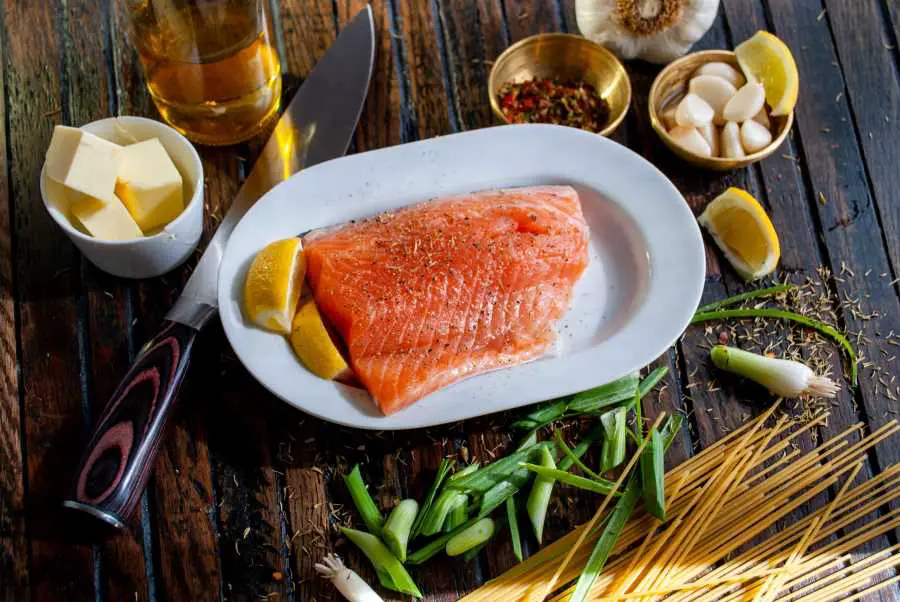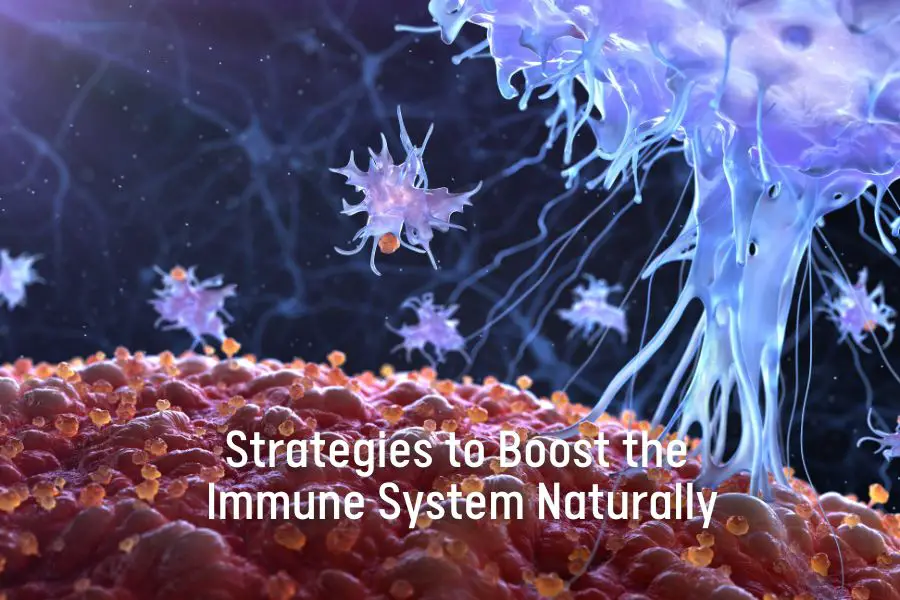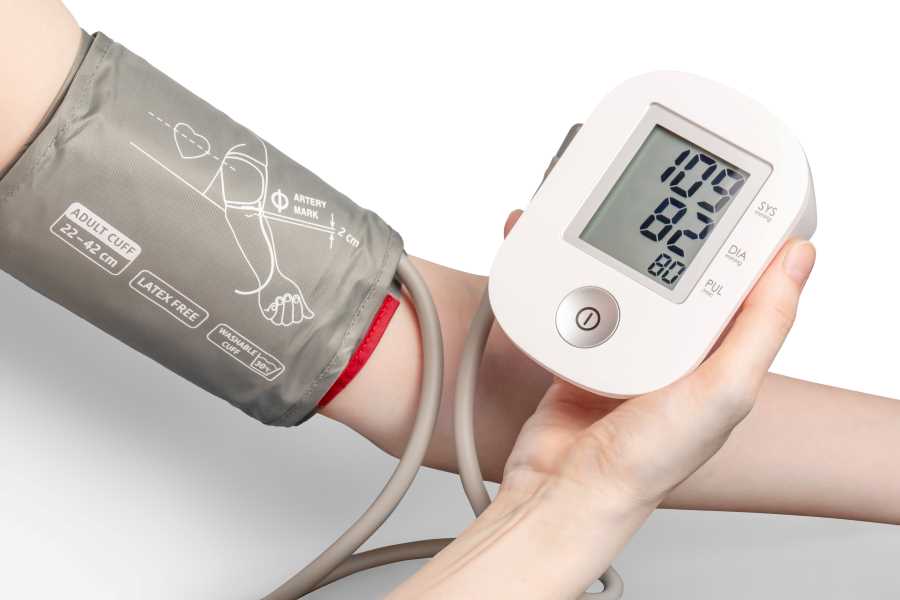Being in ketosis is a desirable state since it can help with weight loss and solves many health problems. As the carnivore diet shot up in popularity in recent times, some are interested in switching from the ketogenic diet to the carnivore diet. One of the common questions from those is will the carnivore diet put them in ketosis?
It is highly likely that the carnivore diet will put you in ketosis because the proportion of fat and protein of the carnivore diet food is generally consistent with the typical macronutrient composition on the ketogenic diet. Although some people may have protein intake that is higher than that on the ketogenic diet, research has shown that the rate at which proteins are converted to glucose remains relatively consistent and is a demand-driven process rather than a supply-driven process.
Ketosis
What is Ketosis?
Ketosis is a metabolic state where, instead of using carbohydrates for energy, your body burns fat and produces ketones for energy.[1]
Carbohydrates are your body’s preferred source of energy and they are converted into glucose once consumed. Your body will rely on carbohydrates as a primary fuel source as long as the supply is sufficient.
However, if carbohydrate intake is less than 50 grams a day, glycogen stores will soon be depleted and a process called gluconeogenesis kicks in. Gluconeogenesis is the endogenous production of glucose in the body from lactic acid, glycerol, and the amino acids alanine and glutamine.[2]
When glucose availability drops further and the endogenous production of glucose is not able to keep up with the needs of the body, ketogenesis will begin.[3]
Ketogenesis is a metabolic process that breaks down fatty acids and produces ketone bodies (acetoacetate, acetone, and beta-hydroxybutyrate) which your body uses as an alternative form of energy. When this happens, your body is said to be in ketosis.[4]
As long as carbohydrate intake remains negligible, your body will stay in ketosis. However, ketosis can also happen during prolonged fasting or starvation when your body uses up its own fat reserve to keep going. And this is one of the main reasons why being in ketosis is desirable: your body learns to use fat for fuel and can effortlessly dig into its own fat reserve to function and burn fat. This consequently leads to fat loss.
How to stay in ketosis?
To remain in ketosis, you need to restrict carbohydrates to about 20 to 50 grams a day.[5]
Foods that help you stay in ketosis are high fat, moderate proteins, and low in carbs, for example, fatty cuts of meat, oily fish, eggs, full-fat yogurt, butter, cheese, nuts, seeds, and low-carb vegetables.
Benefits of the ketogenic diet and being in ketosis
Evidence indicates that the ketogenic diet and the state of ketosis can help with the following:[6, 7]
- Weight loss
- Cardiovascular diseases
- Type 2 diabetes
- Epilepsy
- Skin condition
- Cancer
- Polycystic ovary syndrome
- Neurological diseases
- Alzheimer’s disease
- Parkinson’s disease
- Brain trauma
- Amyotrophic lateral sclerosis.
How to find out if you are in ketosis
To find out if you are in ketosis you can look for signs such as keto breath, weight loss, decrease appetite, improved cognitive performance, fatigue, digestive, and sleep issues. However, to be sure, you can test for the level of ketones in your body using urine strips, breath ketone analyzers, or blood ketone meters.
The Carnivore Diet
What is the carnivore diet?
A carnivore is an animal that feeds on other animals. Therefore, strictly speaking, by definition, someone on the carnivore diet will basically just eat animal source food such as ruminants, pork, poultry, and seafood and drink water.
However, a broader version of the carnivore diet can include all foods that come from or are produced by an animal including ruminant meat (e.g. beef, lamb, goat, and bison), pork, poultry, seafood, eggs, dairy, and honey.
What to eat on the carnivore diet?
On the carnivore diet, all you can eat are food from the animal kingdom.
Some reported doing well with just muscle meat and water. Perhaps the most well-known case is Mikhaila Peterson who cured her autoimmune condition and depression with the beef and water only diet. Her father, Jordan Peterson, also treated myriad issues with this diet including lifelong depression, anxiety, gastric reflux, inability to wake up in the mornings, psoriasis, gingivitis, and numbness on his legs. [8]
However, some advocates a nose-to-tail approach on this diet where one eats not just meat but also organ meats because they are considered the most nutrient-rich food.[9] The most vocal supporter of this approach is probably Dr. Paul Saladino, a psychiatrist and functional medicine practitioner.
Unlike the ketogenic diet, there is no need to maintain a certain macronutrient ratio on this diet. Eat fresh unprocessed meat, eat nose-to-tail and eat a variety of food, and you will be alright. This is how our ancestors ate for millions of years.[10]
Macronutrients on the carnivore diet
There are three potential sources of energy: carbohydrates, fat, and proteins.
There is a negligible amount of carbohydrates in animal source food. For example, the USDA lists muscle meat as having no carbs because the amount is very small. Organ meat like liver only has a tiny bit more (e.g. beef liver and pork liver respectively have 3.9 grams and 2.5 grams per 100 grams).
Unless you drink gallons of milk or eat tons of honey, carbs are negligible on the carnivore diet. Therefore, on the carnivore diet, you will mostly get your energy from fat and proteins.
Will the carnivore diet put you in ketosis?
As mentioned above, people who are on the ketogenic diet are concerned about switching to the carnivore diet, fearing that it might kick them out of ketosis due to the high protein content on this diet. However, this is a total myth.
It is highly likely that the carnivore diet will put you in ketosis because the proportion of fat and protein in the carnivore diet food is generally consistent with the typical macronutrient composition of the ketogenic diet.
Depending on individuals, protein intake on this diet can be higher than that on a typical ketogenic diet. However, not all the extra proteins will be automatically converted to sugar and kick you out of ketosis. Research has shown that the rate at which proteins are converted to glucose remains relatively consistent and is a demand-driven process rather than a supply-driven process.
Let’s have a look at the evidence below.
Fat and protein percentages of carnivore diet food is consistent with the ketogenic diet
The macronutrients on the ketogenic diet are divided in terms of calories into approximately 55-60% fat, 30-35% protein, and 5-10% carbohydrates. [11] One study on the impact of the ketogenic diet on adult overweight or obese females uses 72% fat, 20% proteins, and 8% carbohydrate.[12]
As can be seen from the table below, the percentages of calories from fat and protein of some staple carnivore diet food are generally consistent with the above macronutrient composition on the ketogenic diet.

The staple carnivore food listed in the above table has from 51% to 76% calories from fat, with an average of 66%. This is even higher than the general 55% to 60% recommended on the ketogenic diet.
If you regularly add fattier cuts to your diet, for example, animal fat, butter, and cheese which have 75% to 100% calories from fat, the overall fat percentage can easily exceed the fat percentage recommended on the ketogenic diet.
As an example, if you need 2,000 calories a day, one day’s food consumption could comprise 1.4 lb beef chuck, 2 eggs, 2 servings of cheese, and 2 tbs butter for cooking. The overall percentage of calories from fat for this meal is 74%, substantially higher than what is needed for you to stay in ketosis.

In summary, by choosing just regular cuts and adding a bit of fat here and there, you will have no problem staying in ketosis on the carnivore diet. However, if you drink a lot of milk (e.g. 4-5 cups a day) or add honey very liberally to your carnivore treats, you might be out of ketosis.
Higher protein intake is unlikely to kick you out of ketosis
Some people may like to eat leaner cuts of meat for weight loss and body-building or due to personal preferences. Accordingly, their percentage of calorie intake from fat might fall below the ketogenic diet threshold. Even if this is the case, you are unlikely to be out of ketosis thanks to a very efficient gluconeogenesis process.
As mentioned above, on the carnivore diet, your energy sources are fat and proteins.
Fat gets converted into ketones and is used as your energy source.
Proteins are used for many vital functions in your body. They are the building blocks of muscles, bones, connective tissues, hair, and nails. They help carry oxygen throughout the body and are needed in repairing tissues. They are also used for making hormones, enzymes, antibodies, and neurotransmitters. [13]
If protein intake exceeds what is needed for the above function, theoretically, it can be converted into glucose and/or stored as fat. However, the evidence so far indicates that protein intake above the daily recommended amount neither results in blood sugar spikes nor is stored as fat.
1. Excess protein is not automatically converted into sugar
Ingested proteins are broken down into amino acids in the stomach by stomach acid and enzymes and further metabolized in the small intestine. After they have been broken down completely, some of the amino acids are used as energy by the small intestine cells, and the rest are transported to the liver.[14]
The liver keeps control of the remaining amino acids, deaminating, releasing them into general circulation for protein synthesis and other functions, turning them into glucose, and converting them into urea for excretion in the urine. [15]
If protein intake is more than enough for your body’s functioning needs, theoretically, excess amino acids could, through the gluconeogenesis process, be converted to glucose, resulting in blood sugar spikes and kicking you out of ketosis. However, to date, we have not seen evidence indicating that this process actually occurs.
You’ve probably heard of the no more 30 grams of proteins per meal rule before. For example, in this paper, the authors concluded that “based on the current evidence… to maximize anabolism one should consume protein at a target intake of 0.4 g/kg/meal”. This would translate into a maximum of 30 grams of proteins per meal for a person weighing 75 kg or 164 pounds.
The implication is, if you consume more than 30 grams of proteins, your body would not be able to absorb it all and the excess proteins would be converted into sugar. However, in studies where subjects were given proteins exceeding this amount, blood glucose levels did not rise at all:
- Conn and Newburgh (1936). In this study, 15 subjects with diabetes and 3 control subjects were fed breakfasts of glucose or carbohydrate or protein foods calculated to yield equal amounts of glucose. It was found that blood glucose response to glucose or carbohydrate food was as expected but there was no increase in blood glucose levels after the protein meal although rising blood urea nitrogen indicating protein utilization [16]
- Nuttal et al (1984). In this study, diabetic subjects were given 50 g protein, 50 g glucose, or 50 g glucose with 50 g protein as a single meal in a random sequence. When protein was given alone, blood glucose concentration remained stable for 2 hours and then declined. When protein was given with glucose, blood glucose response at first was similar to that of glucose alone but reduced 34% afterward [17]
- Westphal et al (1990). In this study, 7 healthy, normal-weight subjects were fed breakfasts of 50 g protein, 50 g glucose, and 10, 30, or 50 g protein plus 50 g glucose in random sequence. Similar to the above study, it is found that ingestion of 50 g protein alone did not change the serum glucose concentration 4 hours afterward [18]
- Fronmentin et al (2013). In this more recent study, 8 healthy subjects were given 4 eggs after an overnight fast. Similar to the finding of the above studies, the authors found that “under optimal gluconeogenic conditions and in a realistic nutritional situation, dietary proteins only make a relatively modest contribution to the maintenance of blood glucose levels“[19]
In summary, your body needs glucose for its functioning needs. Carbohydrates, fat, and proteins can be all converted to glucose. However, unless you feed your body carbohydrates which it has no choice but to convert them into glucose, your body only converts proteins and fat to glucose on an as-needed basis. The gluconeogenesis process appears to be not supply-driven but demand-driven.
Excess proteins are not stored as fat
The next question is if excess proteins are not automatically converted into sugar, would they then be stored as fat?
The evidence so far indicates that ‘excess proteins’ are also not stored as fat:
- Antonio et al (2014). In this study, a group of healthy resistance-trained individuals were fed 4.4 grams of protein per kg body weight daily for 2 months. This is 5.5 times the recommended daily protein intake. The authors found that there was no change in overall body composition due to the high protein diet and that consuming a hypercaloric high protein diet did not result in an increase in body fat [20]
- Antonio et al (2016). In a randomized crossover study, 14 healthy resistance-trained men werer instructed to follow a high protein diet for a total of 6 months at about 3.3 grams of protein per kg body weight daily. It was found that “there were no harmful effects on measures of blood lipids as well as liver and kidney function. In addition, despite the total increase in energy intake during the high protein phase, subjects did not experience an increase in fat mass”.[21]
So where did they all go?
We don’t know exactly where the excess proteins go.
My guess is the human body’s demand for proteins is probably a lot higher than the current recommended daily intake, given how vital they are.
We don’t yet know exactly how much proteins we need. The recommended daily protein intake is just an educated guess after all and we don’t know how far off the mark it could be.
In all of the above studies, proteins fed to studied subjects perhaps haven’t actually reached the excessive level yet and that’s why we haven’t seen ‘excess’ proteins turn into fat.
Conclusion
If you are currently on the ketogenic diet and would like to switch to the carnivore diet but are concerned about being kicked out of ketosis, I hope this article has addressed your concern. It is highly likely that you will be in ketosis on the carnivore diet.
If you would like to start the carnivore diet, I’ve written a detailed guide on how to start the carnivore diet here. Please check it out, it will definitely save you a lot of time.
Disclaimer: The information in this post is for reference purposes only and not intended to constitute or replace professional medical advice. Please consult a qualified medical professional before making any changes to your diet or lifestyle.





